Plants for wet soil – 16 water-loving varieties to grow in tricky places
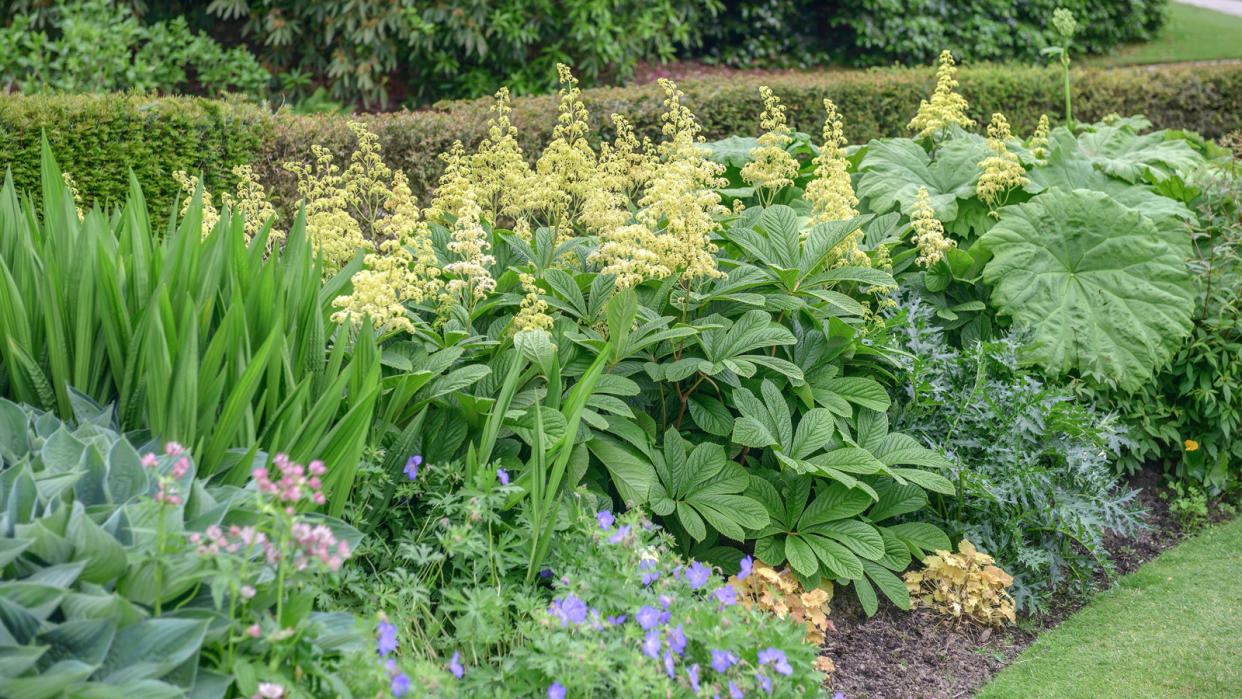
Many gardeners find it a challenge identifying plants for wet soil. Most plots have dank, wet spots where water tends to sit, brooks overflow, springs discharge or there is a naturally high water table. Steps can be taken to improve drainage, especially where conditions are stagnant, but the easiest solution is often to find plants that are happy to thrive in these lower-lying areas.
Moisture-lovers require damp soil but need good drainage for long-term survival. For the best flowerbed ideas, you may find mounding their beds is often a good solution. While most of the roots inhabit the upper layers, deeper ones can reach down to access water during dry spells. True bog and marginal plants like royal fern (Osmunda regalis) and cultivars of Iris laevigata can flourish where water levels fluctuate between standing water and moist soil. Yet these may come unstuck where soils saturated from fall to spring are apt to dry out in summer.
As there is a wide range of attractive moisture-loving plants, a low-lying area is best viewed as an opportunity rather than a disaster. It’s a chance to widen the range of plants you can grow without having to create a bog garden by burying a pond liner and filling it with soil. In large damp sites, well-chosen trees can aerate the soil. Hornbeams, alders, weeping willows and deciduous swamp cypress like Taxodium distichum var imbricarium ‘Nutans’ thrive in wet clay. Meanwhile, a catkin-bearing shrub sweet gale or bog myrtle (Myrica gale) act as an understorey.
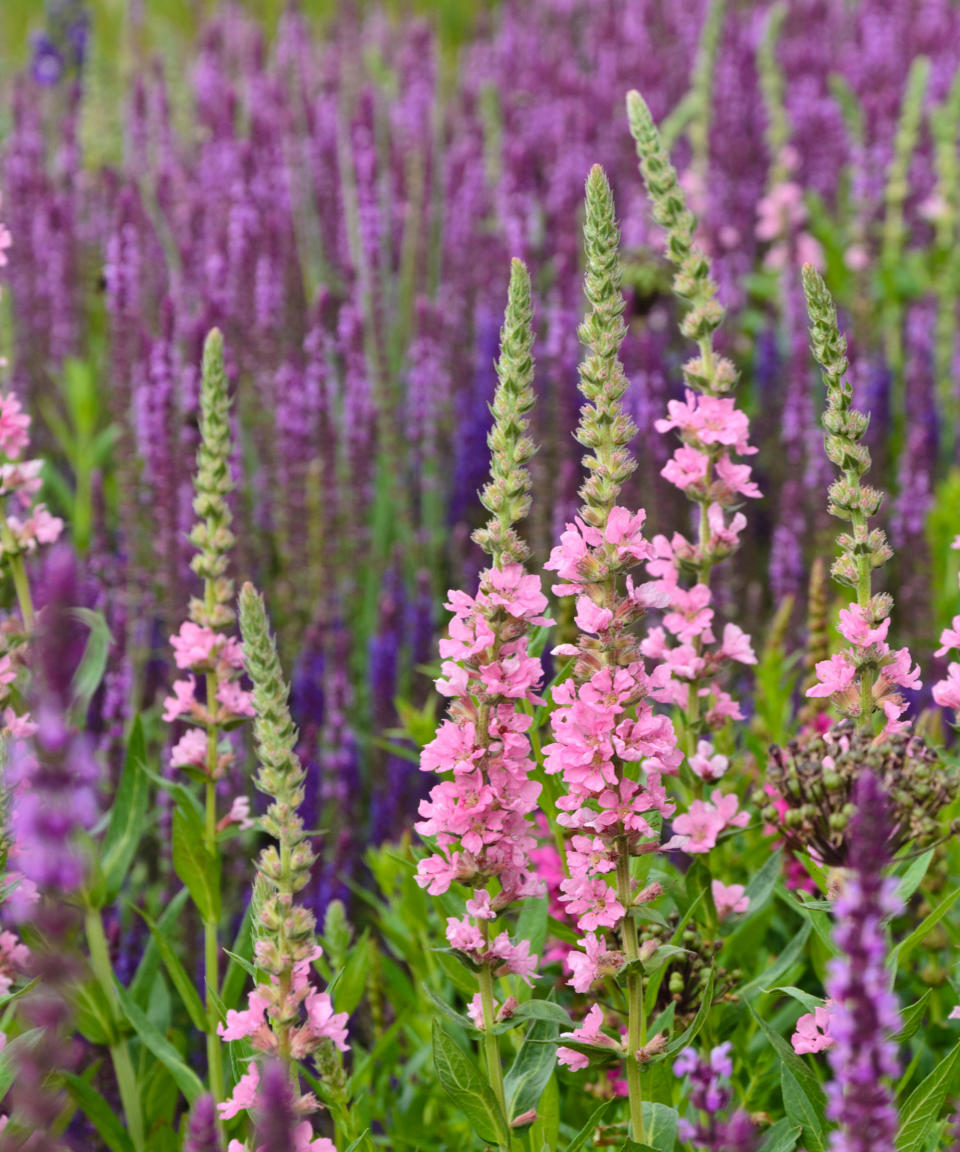
16 plants for wet soil to brighten up tricky spots and damp plots
Spring is a great time to focus on those troublesome areas of the garden and bring them to life with some well-selected color and texture.
We’ve chosen 16 of the best for moist beds, badly drained corners and boggy borders.
1. Clethra alnifolia ‘Hummingbird’

Height: 4ft
Spread: 4ft
Hardiness: USDA 7b/8a
Clethra alnifolia ‘Hummingbird’ is one of the best flowering shrubs you can grow in wet soil, as long as the soil is neutral to acidic. This compact deciduous shrub is also known by the promising names ‘sweet pepperbush’ and ‘summer sweet’.
Small, clove-scented white flowers open in long racemes from mid to late summer, and there are good golden fall tints. You can grow this moisture-loving shrub in sun or light shade. Just cut away any unwanted suckers.
2. Salix ‘Yelverton’
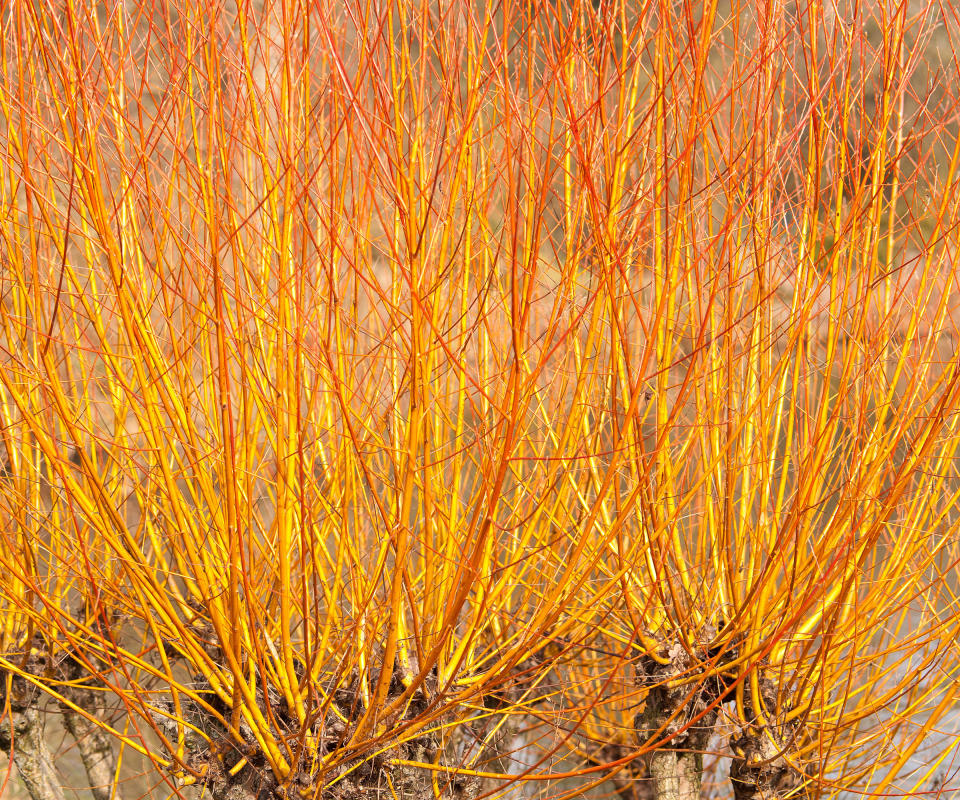
Height: 6ft
Spread: 6ft
Hardiness: USDA 6b/7a
Lovers of British trees will adore this vigorous willow, grown for reddish orange winter stems. Shrubby Salix ‘Yelverton’ AGM is usually pruned almost to the base in March or pollarded, which is when stems are pruned back to a trunk. This needs to be done annually.
This is one of the most vibrant plants for wet soil and gives glorious winter displays. Use the long colourful wands for basket weaving or plant supports. A moist but well-drained soil is preferred, so avoid permanently waterlogged soils.
3. Sambucus racemosa ‘Sutherland Gold’
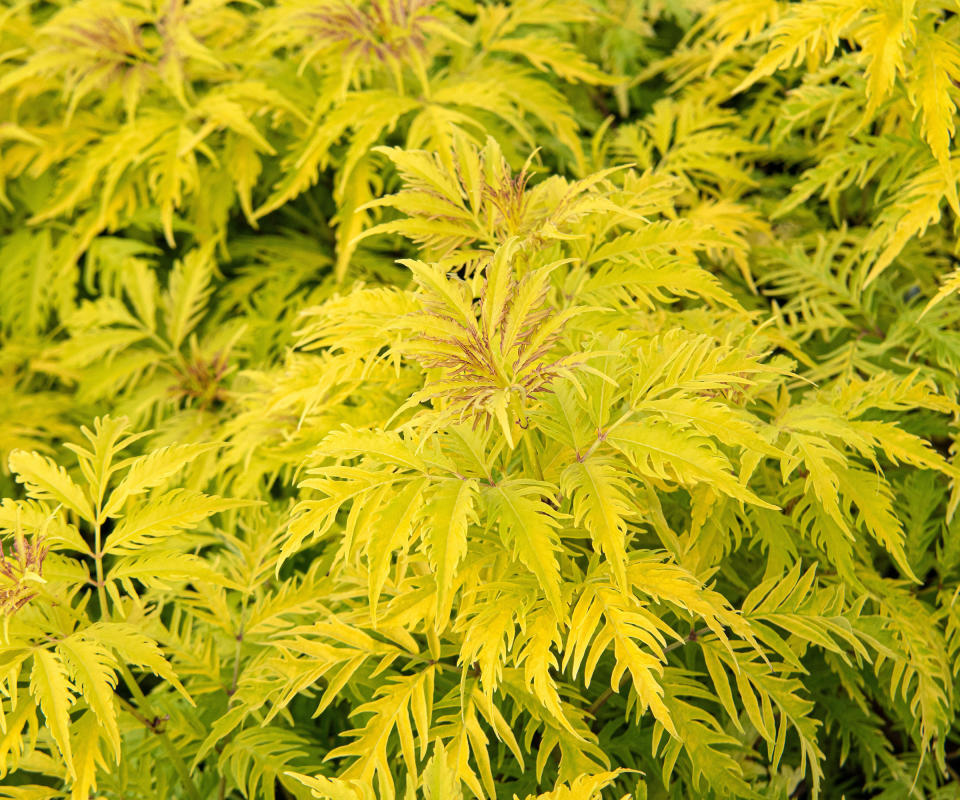
Height: 10ft
Spread: 10ft
Hardiness: USDA 6a-1
Sambucus racemosa ‘Sutherland Gold’ is one of the most uplifting plants for damp areas and moist soil. Although common elder (S.nigra) yields the best crop of berries and dark-leaved S.’Black Lace’ is striking, avid lovers of elder plants will appreciate this cheerful shrub.
This shrubby plant’s divided, golden foliage is sure to brighten up a gloomy spot. Light shade is preferred to avoid scorching the foliage. Expect the usual heads of creamy white elder flowers in May, followed by a light crop of berries.
You can shop for sambucus at Burpee.com.
4. Darmera peltata
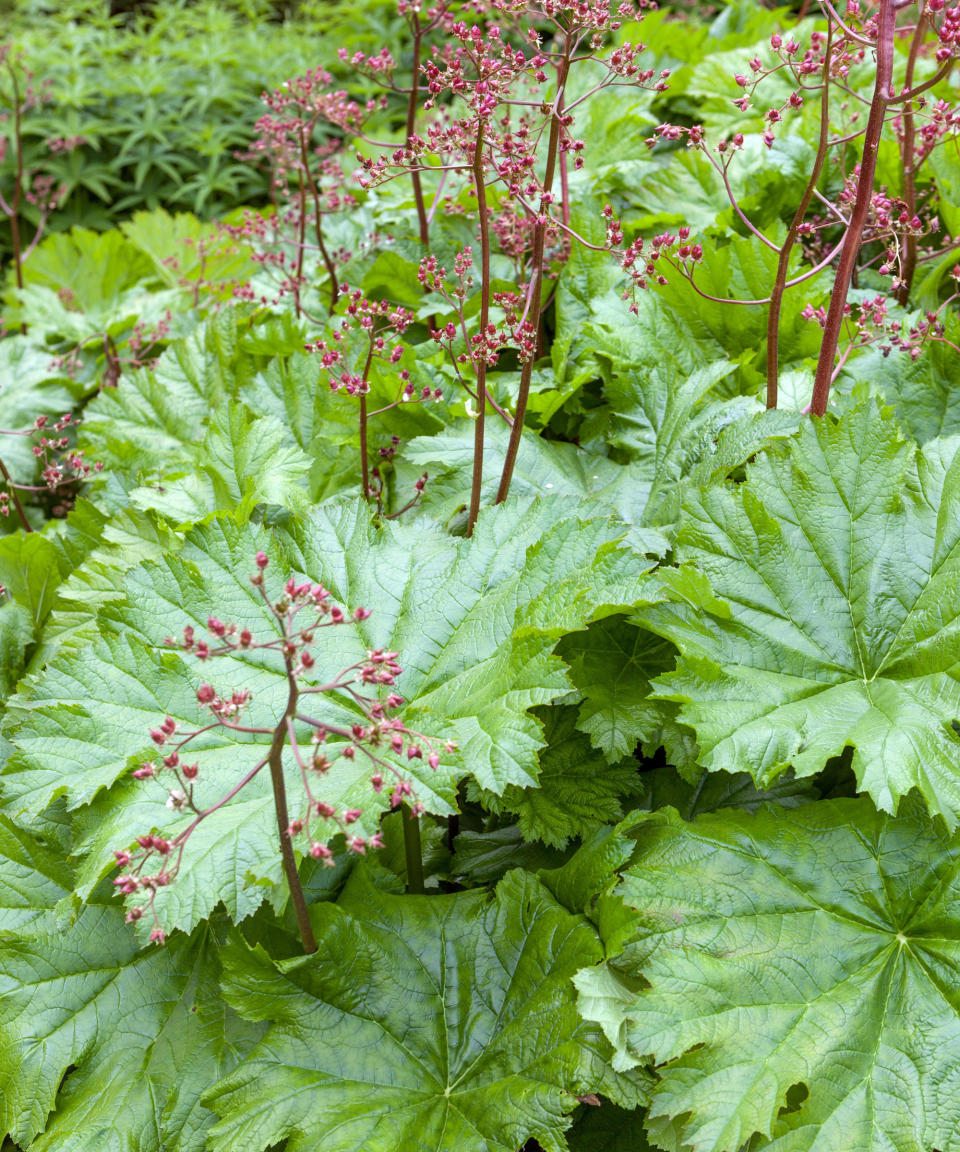
Height: 5ft
Spread: 3ft
Hardiness: USDA 6b/7a
Some of the best plants for wet soil are also good for themed gardens. If you are after tropical garden ideas, you’ll appreciate Darmera peltata. With their roots in ditches, or where rivers break their banks, the umbrella plant takes on a luxuriant, ‘Jurassic Park’ look.
This stunning perennial from SW Oregon/NW California produces naked stems bearing flat heads of pale pink flowers which open before the parasol-like leaves rise upwards. These deliver a russet-red fall finale before the plants die back to thick rhizomes for winter.
5. Iris sibirica ‘Uncorked’
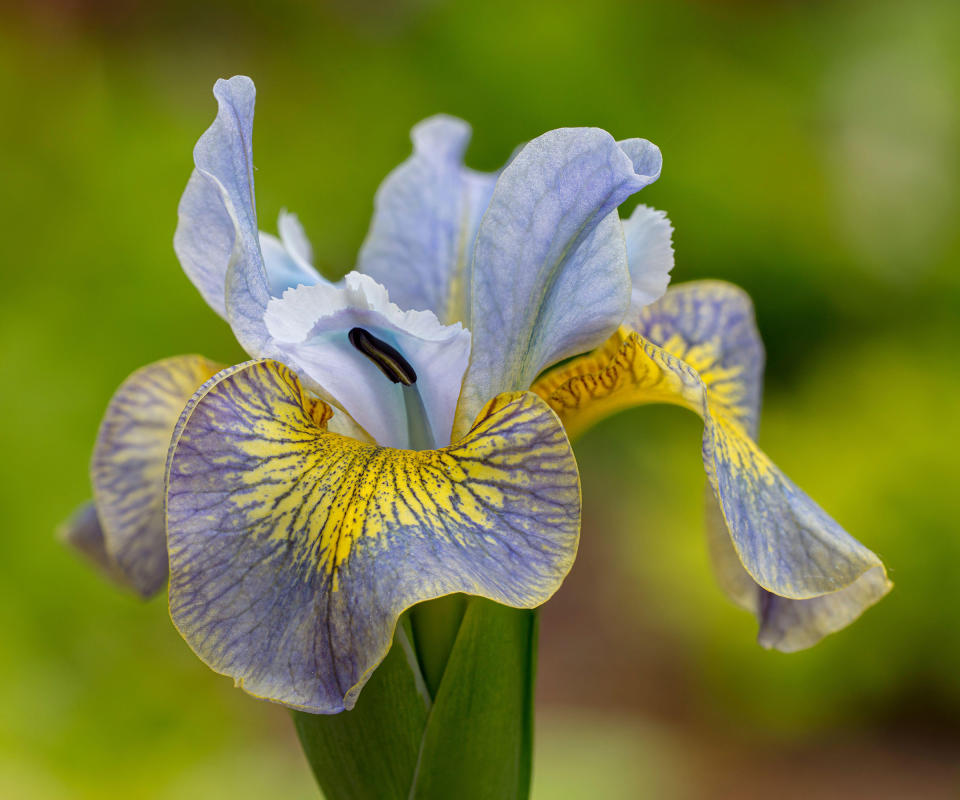
Height: 24in
Spread: 12in
Hardiness: USDA 6a-1
There are some lovely new cultivars of rhizomatous Siberian iris, including this beauty with pale blue standards and yellow-marked falls. This moisture-loving plant is ready to make swathes of tall, slender stems, topped by elegant flowers opening in June.
For anyone who knows how to grow irises, these perennials will flourish in moist soils, though new growth is tempting to slugs. Treat Iris sibirica ‘Uncorked’ as an herbaceous perennial and divide clumps from midsummer to early fall.
Shop for Siberian iris at Nature Hills Nursery.
6. Lythrum salicaria ‘Blush’
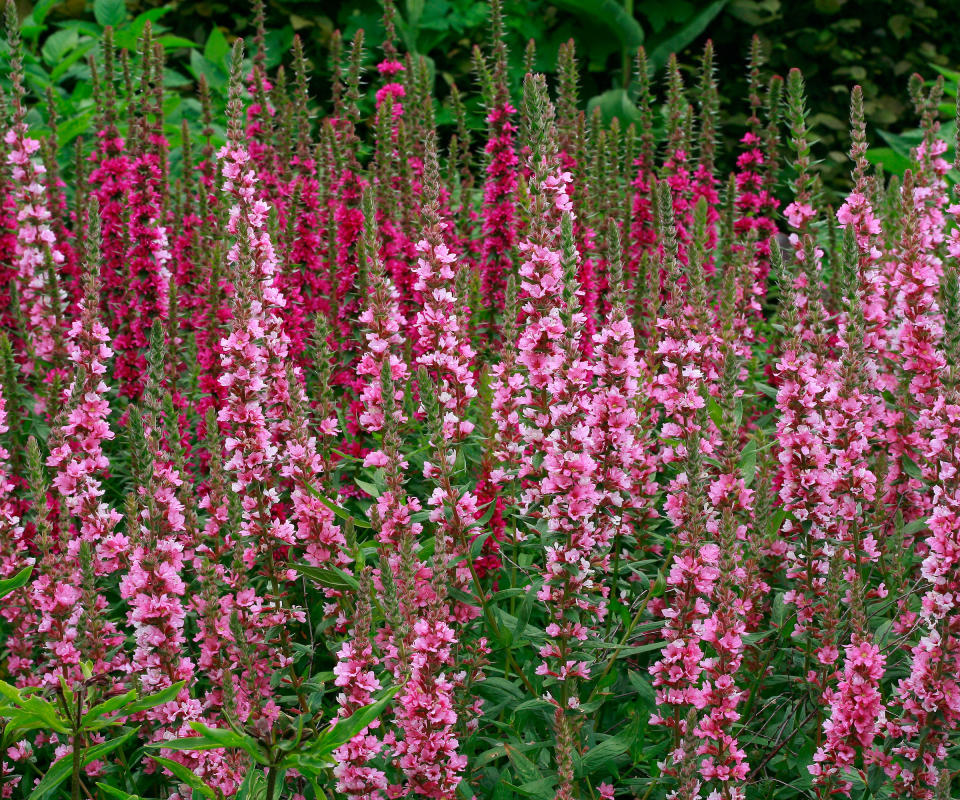
Height: 30in
Spread: 18in
Hardiness: USDA 6a-1
Herbaceous perennial European and Asian purple loosestrife, having naturalized in North America, is a bit of a nuisance in natural wetlands. Elsewhere, though, cultivars such as ‘Blush’ are lovely choices for colonising moist soil and are ideal plants for damp conditions.
These plants would not look out of place in a country garden themed spot. The tall narrow spires of pale-pink midsummer-fall flowers make strong upright shapes. Grow Lythrum salicaria ‘Blush’ in sun, and remember to deadhead if you want to prevent seeding.
7. Fritillaria meleagris
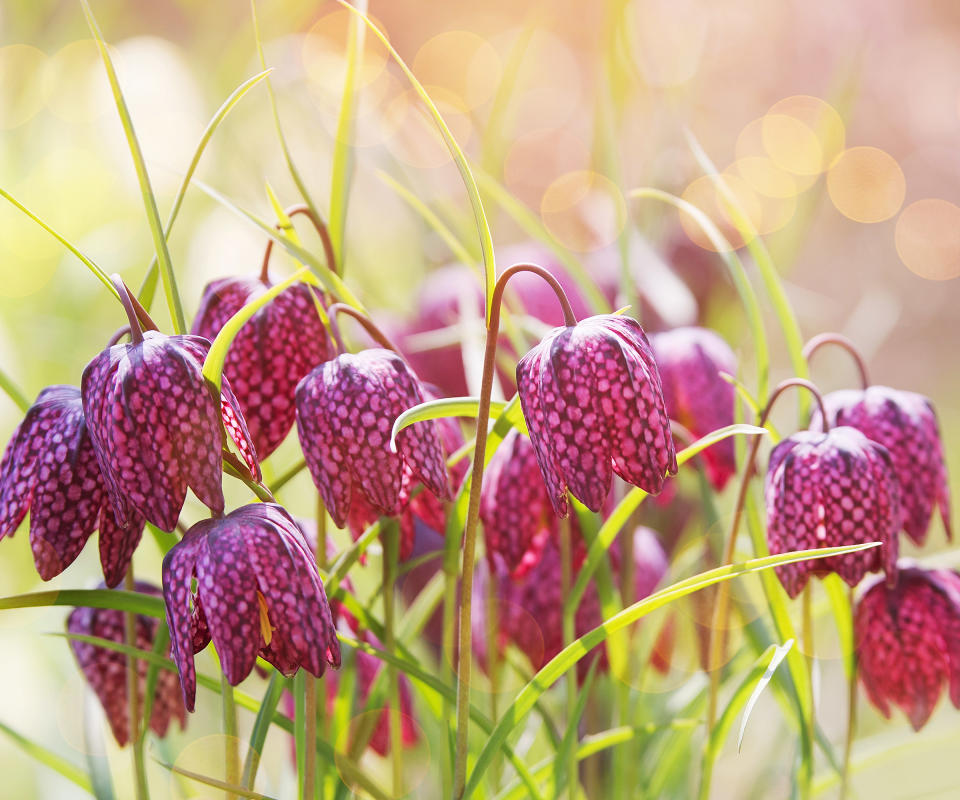
Height: 10in
Spread: 3in
Hardiness: USDA 5a-9b
Just because you are trying to address a damp planting area doesn’t mean you can’t have some fun with your selections. The lovely snake’s head fritillary, one of the most intriguing spring bulbs, thrives in moist meadows and will redeem a damp lawn in the open or light shade.
Plant bulbs 4in deep to enjoy the classic nodding purple and white chequerboard flowers in mid-spring. Just don’t cut grass until the leaves of Fritillaria meleagris have died back. Lawns or borders need to dry out for summer dormancy.
You can shop for fritillaria at Etsy.
8. Leucojum aestivum ‘Gravetye Giant’
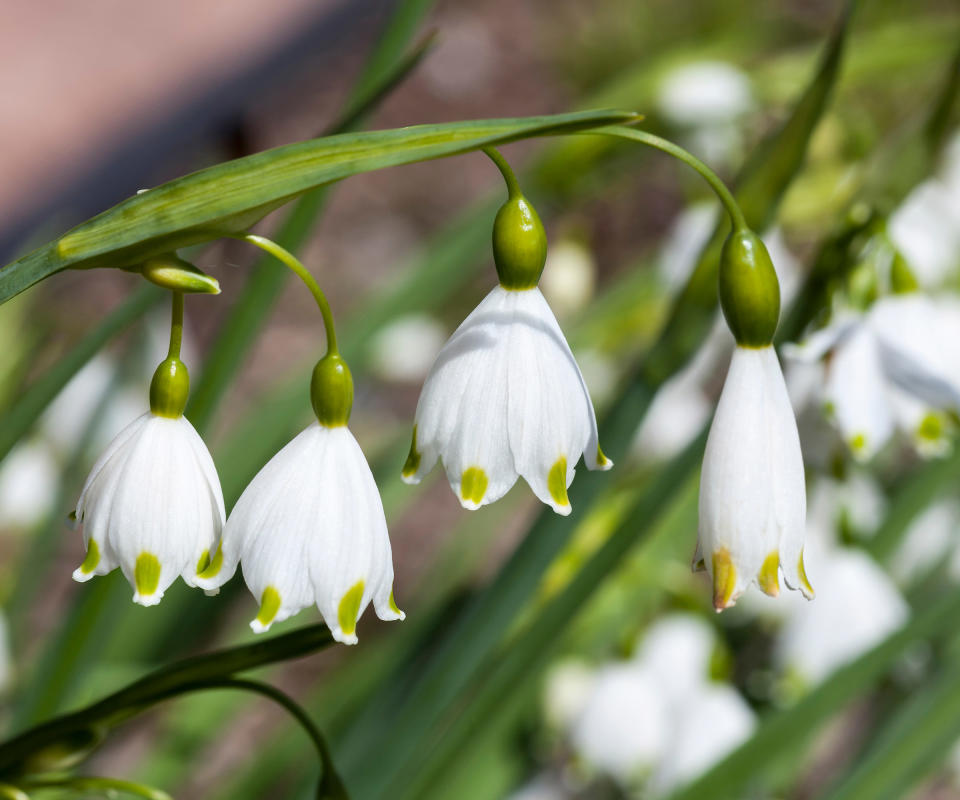
Height: 30in
Spread: 12in
Hardiness: USDA: 6a-1
Anyone looking for the best snowdrops to grow as well as the best plants for wet soil will love this one. Despite the name ‘summer snowflake’, the bulbous clumps of Leucojum aestivum ‘Gravetye Giant’ produce their green-marked white blooms in late winter-early spring.
This is an excellent choice if you fancy growing bulbs in damp spots, and its blooms resemble giant snowdrops. They thrive in dank bogs at the bottom of gardens, in dappled light, yet will also grow in better-drained improved clay in other parts of the garden. Plant bulbs 4in deep in fall.
9. Narcissus pseudonarcissus
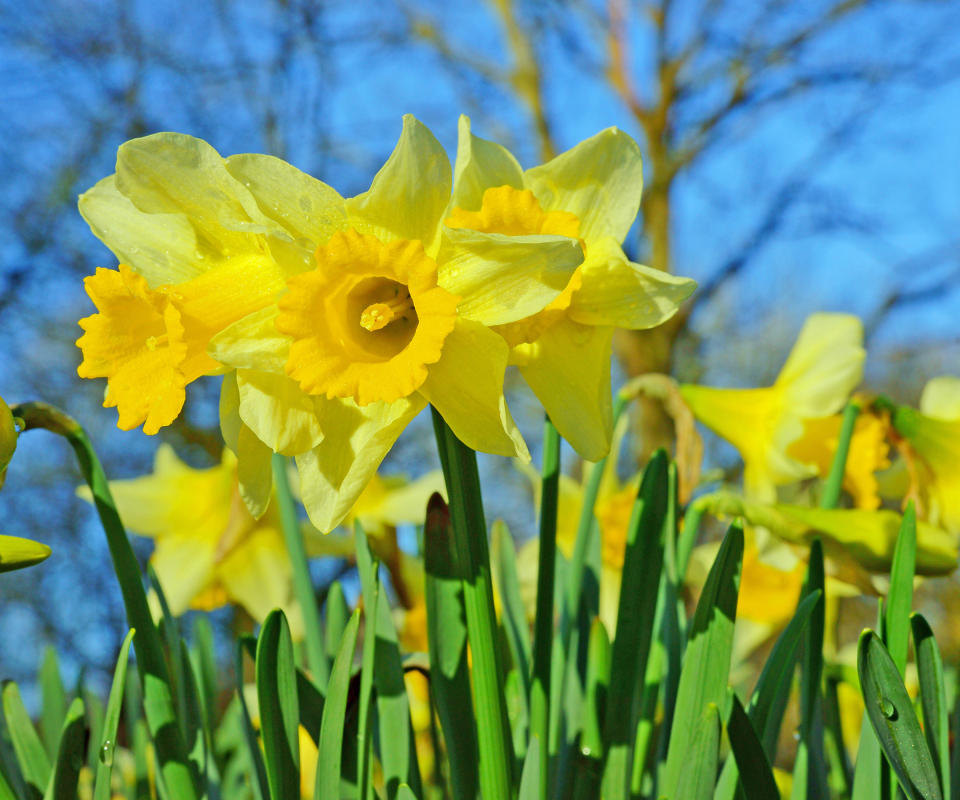
Height: 12in
Spread: 4in
Hardiness: USDA 6b/7a
Some of the best bulbs for damp soil can also be amongst the brightest and cherriest. If you are keen to plant daffodil bulbs, you can’t go wrong with Narcissus pseudonarcissus. Moisture-loving daffodils are excellent in damp meadows and clearings in damp woods.
It’s always impressive how wild daffodils can thrive in heavy, moist soil, even when positioned on a spring-fed hillside. These cheerful plants tolerate the winter wet, bloom profusely, enjoy damp spring soil and even happily withstand a drier summer.
Shop for daffodil bulbs at Burpee.
10. Cardamine pratensis
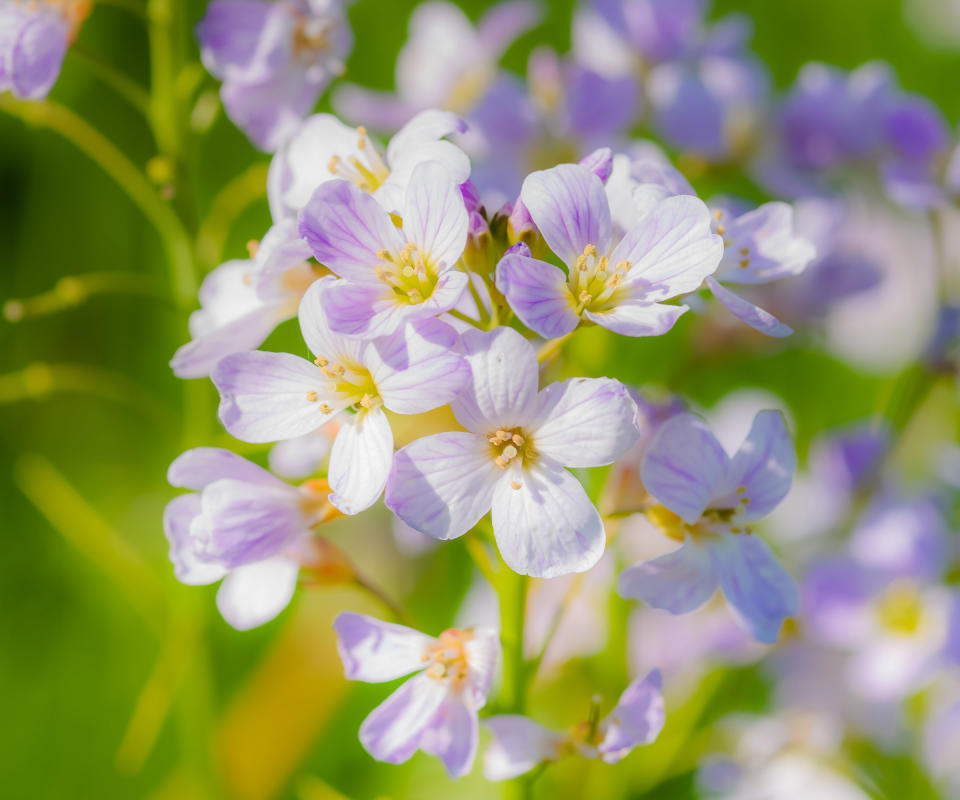
Height: 12in
Spread: 12in
Hardiness: USDA 6a-1
If you crave the delights of a wildflower meadow, you’ll appreciate this next choice in our selection of plants for damp spots. The appearance of the lilac-pink flowers of perennial lady’s smock (or cuckoo flower) in verges and meadows is charming proof that spring has properly arrived.
Moist yet well-drained soil is the preference for Cardamine pratensis, and they’re the perfect choice for colonising damp lawns allowed to develop into a moist meadow. Propagate by seed or division.
11. Lychnis flos-cuculi
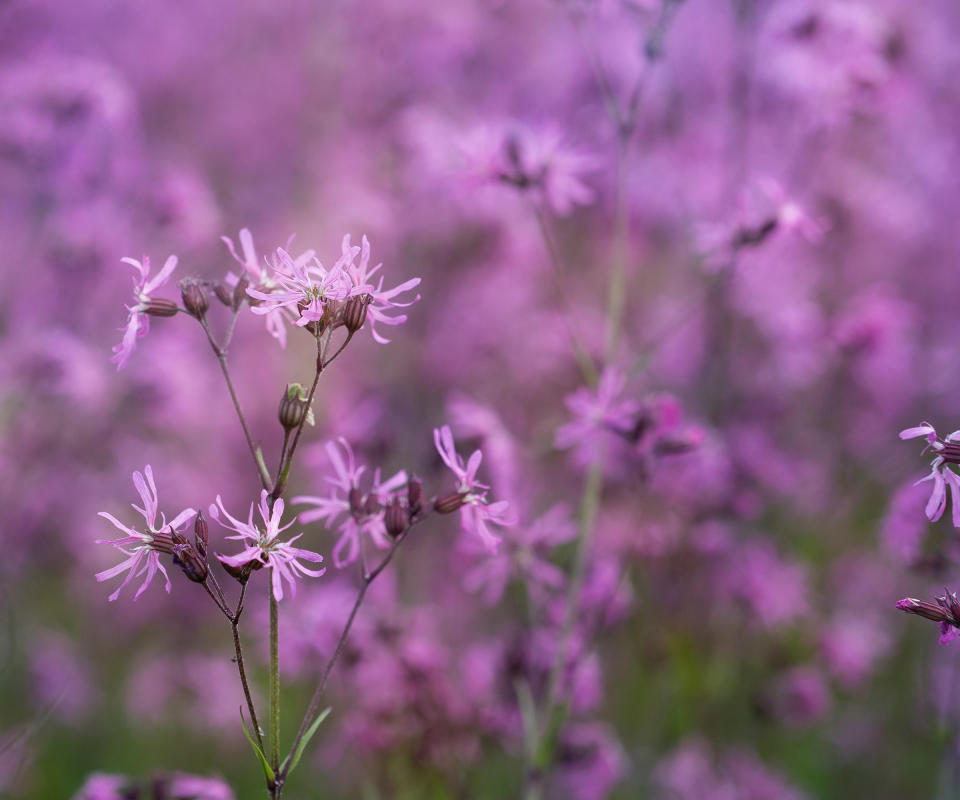
Height: 18in
Spread: 12in
Hardiness: USDA 6b/7a
Another great choice for moist meadow planting, Lychnis flos-cuculi is also one of the most colorful plants for wet soil. If you are fond of pink and purple plants, this British wildflower is easily raised from seed for plants to sprinkle through areas of boggy grassland.
A plant of water meadows and marshes, this branching upright perennial is easily identified in early summer. It develops clusters of rose-pink or lilac purple flowers with narrowly shaggy, deeply cut petals, earning it the name ‘ragged robin’.
12. Filipendula ulmaria
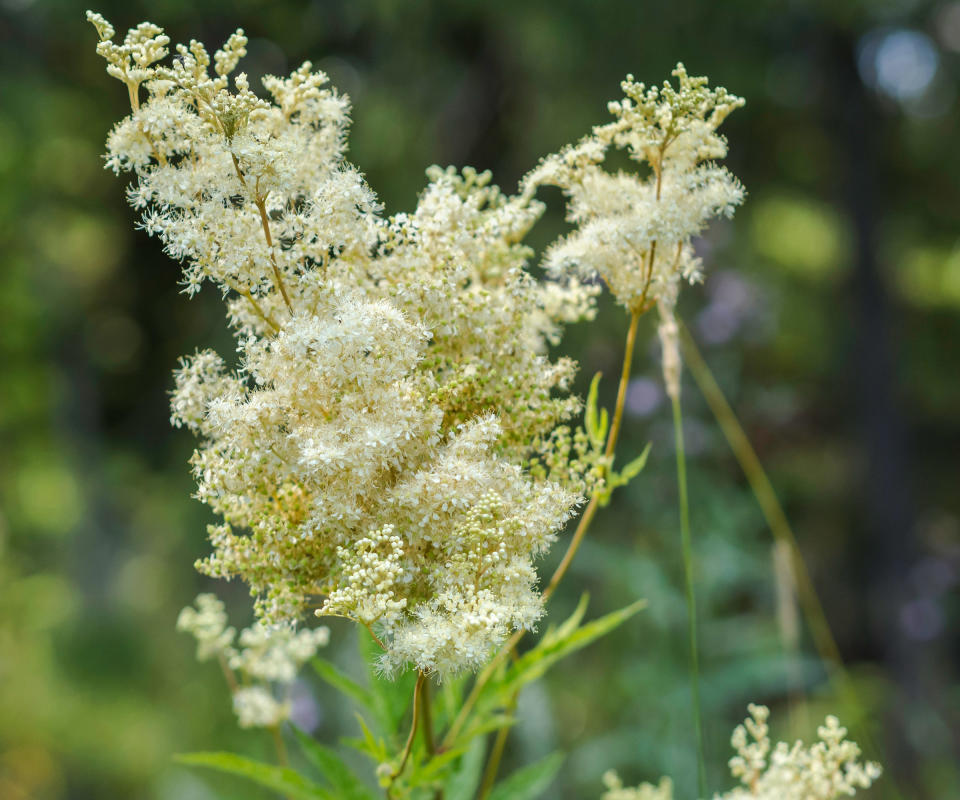
Height: 2-3ft
Spread: 2-3ft
Hardiness: USDA 6b/7a
Many meadow plants bloom in spring, so for summer interest, why not introduce British wildflower and forager’s favourite, meadowsweet? The tall stately stems of Filipendula ulmaria bear clusters of small, fragrant creamy flowers in summer.
This rhizomatous perennial is a delightful choice for anyone looking for novel white garden ideas as well as moisture-loving plants. It holds its own well amongst robust grasses and tolerates poorly drained moist soil in damp ditches and riverside meadows.
Shop for meadowsweet at Etsy
13. Gunnera manicata
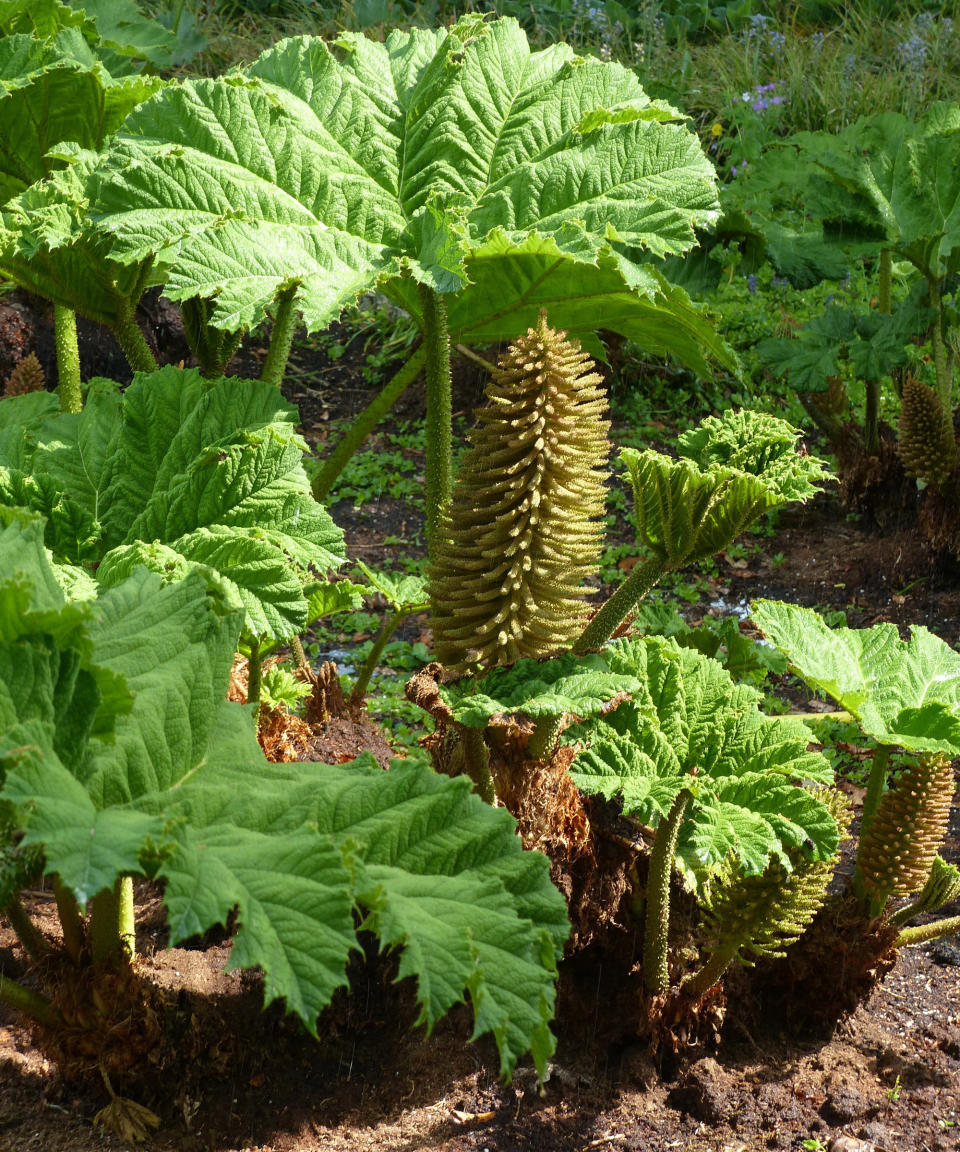
Height: 5-8ft
Spread: 5-8ft
Hardiness: USDA 7b/8a
Our next selection is sure to appeal to lovers of rhubarb as well as being one of the best plants for wet soil. Known as giant or Chilean rhubarb, its large crinkly foliage is accompanied by cone-like arrangements of small flowers in the summer months.
Gunnera manicata is a spectacular Brazilian herbaceous perennial, at its best in wet soils, bog gardens or brookside locations. These encourage massive umbrella-like leaves with bristly stems and, on the undersides, veins. Foliage dies back for winter and provides insulation for crowns.
14. Senecio ‘The Rocket’ AGM
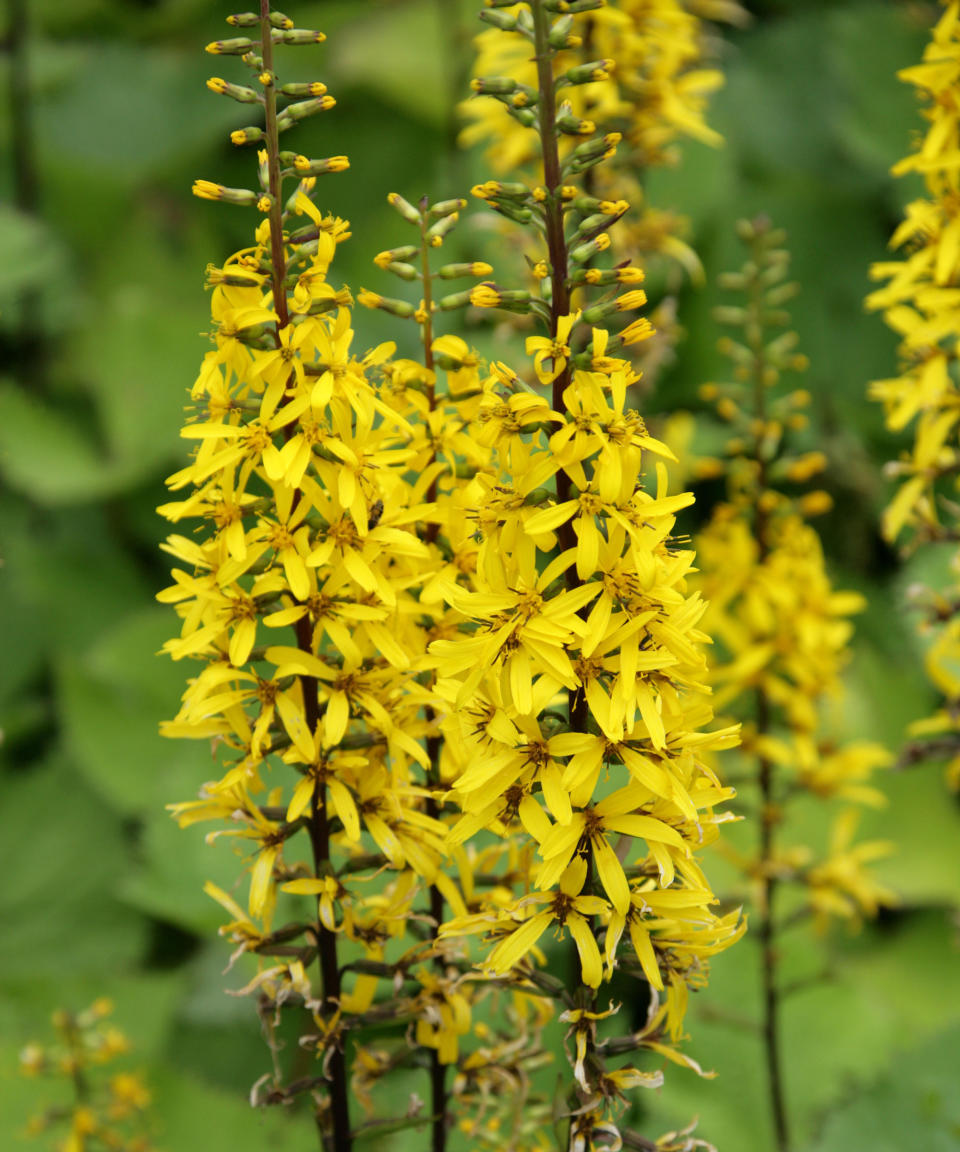
Height: 6ft
Spread: 3ft
Hardiness: USDA 6b/7a
Better known as ligularia, this is a classic ‘bog garden’ herbaceous perennial. Senecio ‘The Rocket’ produces large, tooth-edged leaves, and these are apt to wilt in harsh sun or if the soil begins to dry out.
Lovers of bright garden color schemes will appreciate the flowers of these vibrant plants for bogs. With toes suitably moist, plants happily send up black stems clad with yellow flowers in summer. Deep soil, shelter and some indirect sun are appreciated.
15. Rodgersia aesculifolia AGM
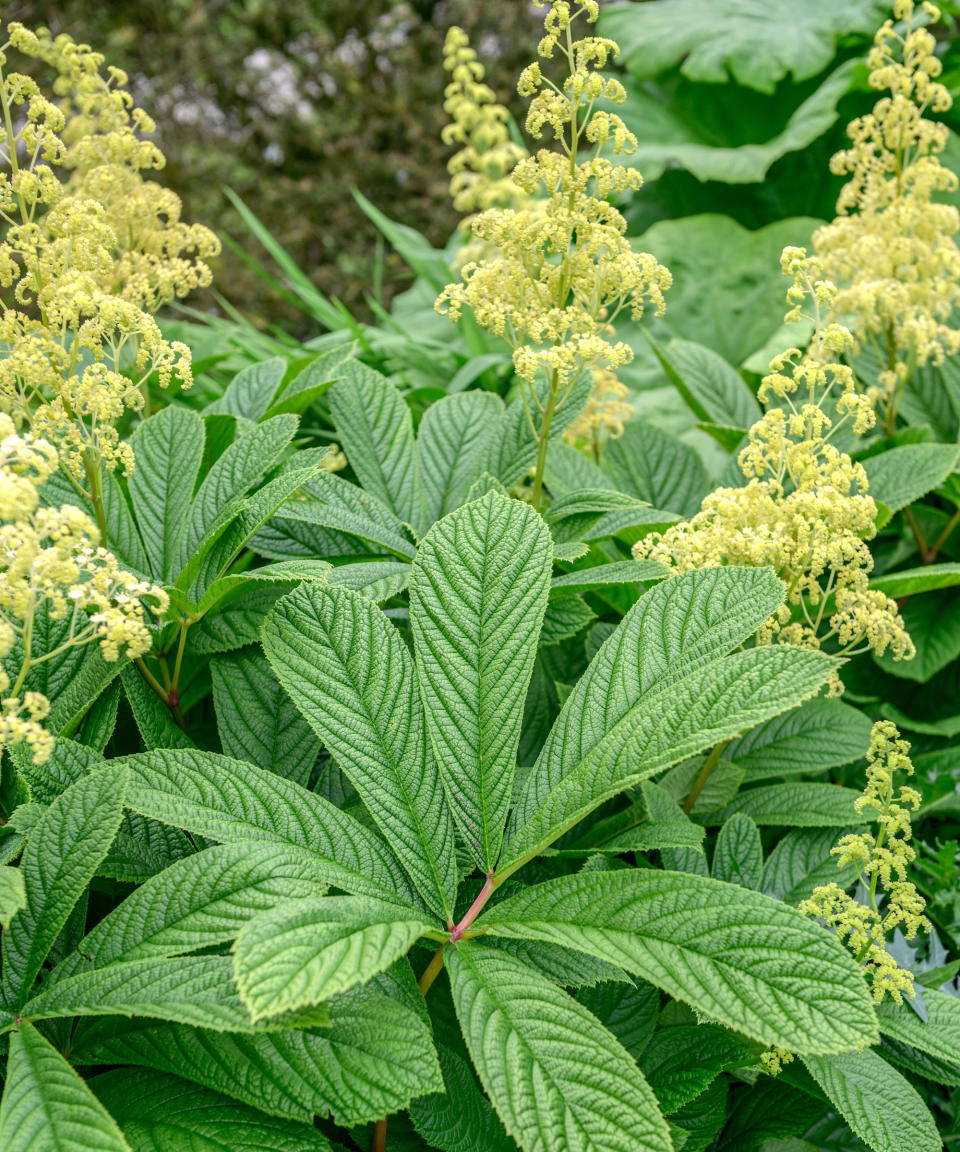
Height: 6ft
Spread: 3ft
Hardiness: USDA 6b/8a
Another of our recommended plants for bogs and water garden ideas is this herbaceous perennial from Northern China. The leaves of Rodgersia aesculifolia resemble those of conker trees (horse chestnuts), and are large and impressively shaped.
These striking plants are handsome with or without the accompaniment of small yellow-white summer flowers held in tapering panicles. Consistently moist, humus-rich soil and shelter from drying winds will keep this bog garden favorite perfectly happy.
16. Primula japonica
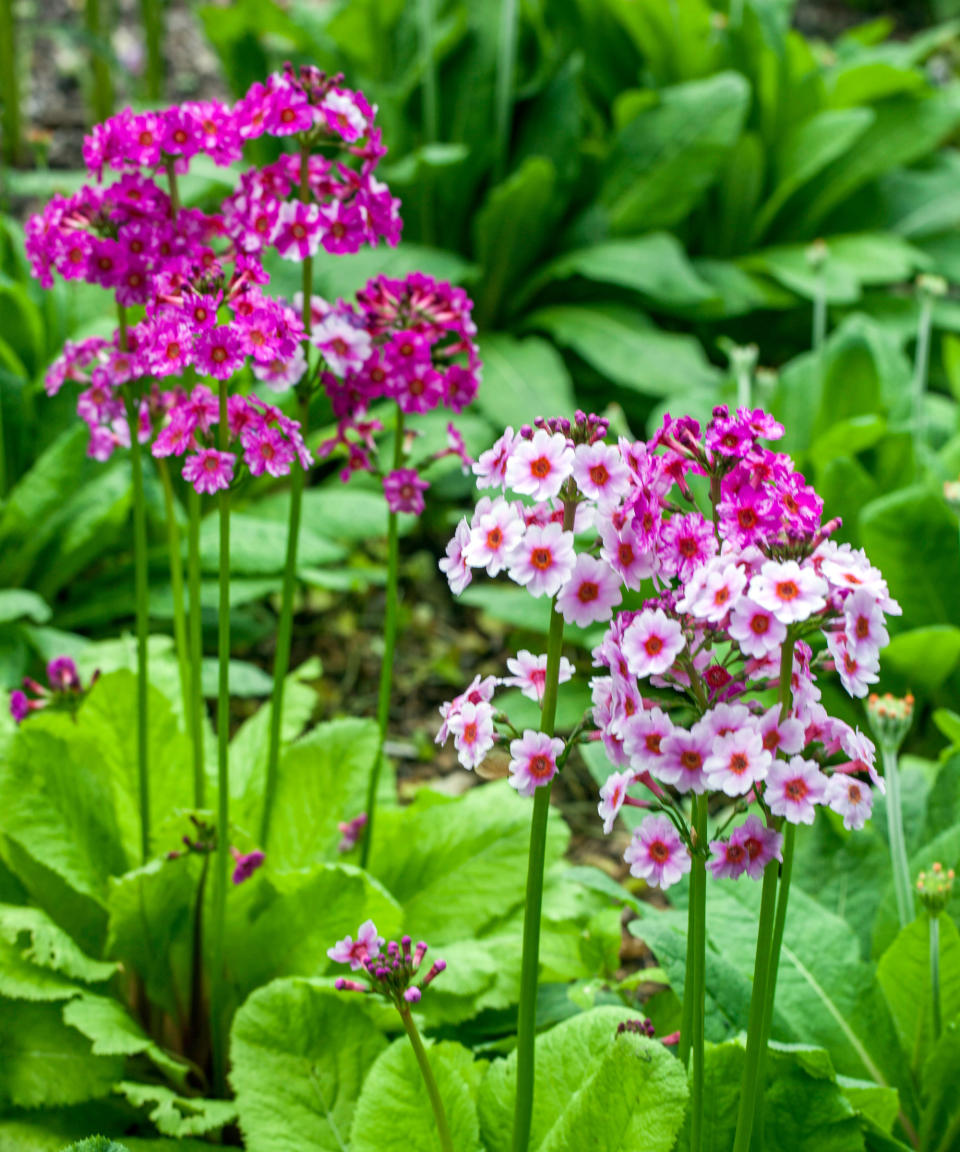
Height: 24in
Spread: 12in
Hardiness: USDA 6b/8a
If you are a big fan of Japanese gardens, then you will appreciate these delicate plants, and they also make great plants for wet soil. Hybrids of candelabra Japanese primulas make a fine show flowering in late spring-early summer, although individually they are short-lived.
For a continuing colony, make sure there is moist, neutral-acidic, humus-rich soil or short, thin grass between the plants. This will allow for successful self-seeding. Primula japonica is perfect for a bog or marshy bed between other plants.
Shop for primula japonica at Etsy
Why can’t all plants grow in wet soils?
Although an abundance of water sounds life-giving, plants can have too much of it. Knowing when to water plants, and how frequently, is only a part of keeping them healthy. Roots need to breathe – and when water fills soil air pockets for abnormally long periods, this poses problems to most plants. Their roots cannot function normally, leading to chlorosis (pale growth), rotting and death.
Plants evolved to grow in moist soils often have aerenchyma, a spongy tissue forming air spaces between cells in roots, leaves and stems to help with oxygenation. Others make fine surface roots from their stems to scavenge oxygen from the soil surface when lower levels are water-filled. Swamp cypresses produce ‘knees’ or roots that project from the ground, rather like snorkels.
What plants grow best on wet land?
There are important distinctions between plants that enjoy moisture and those that are happy to grow in bogs and marshes. As stated in Water Gardening by Perry D Slocum and Peter Robinson (available on Amazon): ‘Bog plants and marginal plants, unlike moisture-loving plants, thrive in totally saturated or submerged soils… a condition that would cause the extensive range of moisture-lovers to quickly succumb’.
A good example is sneezeworts or heleniums; herbaceous perennials that need moisture, but turn up their toes in waterlogged conditions. The bog and marginal plants suited to wetter places with low soil oxygen include some that are potentially invasive and should not be planted close to natural waterways.
There is a bit of trial and error involved when growing plants in wet soil, so embrace a combination of careful planting and happy accidents.
For instance, a Chilean rhubarb (Gunnera manicata) planted only a short distance uphill may fail to reach the magnificent proportions of plants with their feet in a ditch or stream. Snowdrops are happiest clustering beneath trees – while wild daffodils will likely naturalize in nearby meadows.
Get to know your garden’s soil types and identify those areas that are best suited to experimentation.

